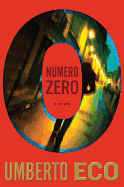
| Publisher: | Houghton Mifflin Harcourt | |
| Genre: | Political, Fiction, Thrillers, Satire, Literary | |
| ISBN: | 9780544635081 | |
| Pub Date: | November 2015 | |
| Price: | $24 |
| Starred | Fiction |
by Umberto Eco, trans. by Richard Dixon
One of Umberto Eco's defining features as a writer is his boundless intellect, which allows him to leap nimbly through history and various academic disciplines with infectious glee. His novel Numero Zero is of a piece with the rest of his work, albeit much shorter and more caustic. Unlike the massive historical epics that helped put Eco's name on the map, Numero Zero could easily be classified as a novella. It's remarkable, then, how many big ideas Eco manages to stuff inside of it.
Set in 1992, the book's formal plot involves a hack writer who is hired to help create a newspaper dedicated to extortion and slyly conducted libel. The plot also features a vast conspiracy theory spun by a paranoid reporter working for the newspaper. In The Prague Cemetery, Eco showed he is obsessed with the idea of shadowy events and organizations that underpin our everyday reality. In Numero Zero, the conspiracy sprawls to include both real and implausible ideas, like Mussolini's supposed faked death, the terrorist attacks that plagued Italy during the turbulent '60s and '70s, the controversial Cold War program Operation Gladio and, as ever, the Masons.
In this slim volume, Eco somehow also takes the time to deconstruct media and its reality-warping tendencies. Numero Zero viciously satirizes the forces that go into dishonest news-making as well as the gullible Italian public that eats it up. Eco's criticisms might seem a shade elitist if he didn't take equal time satirizing the truth-seekers who wind up paralyzed by their own paranoia. --Hank Stephenson, bookseller, Flyleaf Books
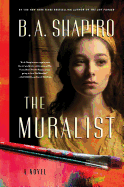
| Publisher: | Algonquin | |
| Genre: | General, Political, Fiction, Historical | |
| ISBN: | 9781616203573 | |
| Pub Date: | November 2015 | |
| Price: | $26.95 |
| Fiction |
by B.A. Shapiro
After The Art Forger, B.A. Shapiro reenters the world of art with The Muralist, a historical novel about the birth of the Abstract Expressionist movement. The Muralist is filled with avant-garde artists of the era like Pollock, de Kooning, Rothko and Krasner, but the novel is primarily centered on the fictional Alizée Benoit, who hung out with the others at the Village's Jumble Shop, and eventually convinced Eleanor Roosevelt to provide Works Progress Administration funding for two murals in the city. On the verge of fame, Benoit disappeared, leaving only rumors and two paintings inherited by her great-niece Dani Abrams, the novel's narrator. Dani lethargically works for an auction house among low-level cataloguers "with undergraduate art degrees from classy colleges and no real marketable skills." When a box of early unsigned Abstract Expressionist works is dropped at her cubicle to research and authenticate, Dani begins a quest to tie these paintings to her lost great-aunt and prove Benoit to be an early participant in the Abstract Expressionist art movement.
The Muralist is partly the study of the ravages of the Great Depression, the largesse of Roosevelt's WPA program and the politics of a largely isolationist U.S. population that was set against entry to millions of mostly Jewish refugees. It is also a story of the first indigenous American art style, a drama of family secrets in the wake of the Holocaust, and a passionate love story of Benoit and Rothko. A novel of art, romance, timely historical issues and family legacies, The Muralist smoothly bridges the literary/popular fiction gap. --Bruce Jacobs, founding partner, Watermark Books & Cafe, Wichita, Kan.
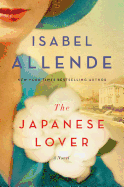
| Publisher: | Atria | |
| Genre: | General, Fiction, Romance, Historical - General, Historical, Literary | |
| ISBN: | 9781501116971 | |
| Pub Date: | November 2015 | |
| Price: | $28 |
| Fiction |
by Isabel Allende
Isabel Allende (The House of the Spirits; Maya's Notebook) presents a beautiful, complex story of love, sacrifice and redemption in The Japanese Lover.
In 1939, an eight-year-old Polish girl named Alma is sent from Poland as the Nazis advance, to live with her aunt and uncle in opulent circumstances in San Francisco. There she meets a Japanese boy her age, Ichimei, who will be her great love, and her older cousin Nathaniel, who will be her best friend. Alma's story--and her convoluted relationships with Ichi and Nat--is revealed from a distance of many years, when a young Eastern European woman named Irina takes a job at the senior residence Alma has just moved into. Slowly, Irina wins the trust of the prickly elderly Alma, and the unsolicited devotion of Alma's grandson Seth. These and other characters are wrought with tenderness, humor and nuance in Allende's characteristic lyric style, as the story of Alma's love unfolds in a narrative alternating between passionate old age and the passions of youth.
Allende ruminates over lifelong love, in its various forms and bound by destiny; the sacrifices love does and does not compel; and the ugly realities of war and racism--while Alma emigrates to flee war, Ichimei and his family are interned in the United States following Pearl Harbor, and Irina's personal history is touched by trauma and displacement that is revealed only late in the book. This novel of fervent feeling, reflection and multiculturalism will please Allende's many fans. --Julia Jenkins, librarian and blogger at pagesofjulia
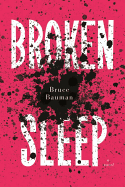
| Publisher: | Other Press | |
| Genre: | Jewish, Fiction, Sagas, Literary | |
| ISBN: | 9781590514481 | |
| Pub Date: | November 2015 | |
| Price: | $16.95 |
| Fiction |
by Bruce Bauman
The secrets, lies and mysteries in Bruce Bauman's novel Broken Sleep circle around and build on each other in a story that is frenetic and disorienting. From a single, simple plot point, one man is disconnected from the world he'd been living in, and every time he seems to be close to finding his way back, he gets pulled further out.
At the beginning of Broken Sleep, Moses Teumer is told that, in order to keep his leukemia in remission, he must find a bone marrow donor. His search for a match leads him to discoveries about his perceived reality that shatter both his hopes for survival and his own worldview. After Moses discovers that his Jewish mother is not his birth mother, he is stunned to learn next that he was actually born to a gentile, avant-garde visual artist committed to a mental facility, and that he has a rock star and political dissident for a half-brother.
As Moses searches deeper into his familial history, answers lead to more questions so that finding his bone marrow match becomes the least of his problems. In a narrative that takes a hard look at contemporary definitions of identity, meaning, sex, love and devotion, Moses discovers his own connection to domestic terrorists, Nazi Germany and Greta Garbo.
Although Moses Teumer loses his way among a swelling cast of characters, Bauman (And the Word Was) never loses his authorial way. As the plot spins out of control, Bauman is always, somehow, bringing his characters back home again. --Josh Potter
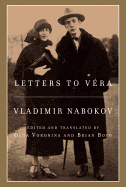
| Publisher: | Knopf | |
| Genre: | Letters, Literary Collections, Biography & Autobiography, Literary | |
| ISBN: | 9780307593368 | |
| Pub Date: | November 2015 | |
| Price: | $40 |
| Starred | Biography & Memoir |
by Vladimir Nabokov, edited and translated by Olga Voronina and Brian Boyd
Véra Nabokov was the wife and assistant to the great Russian expatriate novelist Vladimir Nabokov. She was his closest confidante and adviser, and his grandest love. Almost all of these previously unpublished Letters to Véra are from the years 1923 to 1950, throughout their courtship and the first and most difficult half of their marriage. After that, during the years of Vladimir Nabokov's greatest literary fame, they were rarely separated and had no need to correspond.
The earliest letters in particular are wonderfully expressive, full of gorgeous imagery, dialogues and "imaginary nonsense." In 1926, Véra went to a sanatorium to be treated for anxiety, depression and weight loss, and Vladimir wrote to her almost every day. Those letters are flooded with his ardent love, and perhaps with his concern to entertain her and lift her mood. "I more than adore you. You are my happiness and life. When I think about you, I get so happy and light, and since I think about you always, I'm always happy and light."
Letters to Véra was edited by Nabokov scholar Brian Boyd and translated with sensitivity and skill by Olga Voronina. Boyd introduces the volume with a long satisfying biographical essay on the Nabokovs' marriage. In a translator's preface and in some of the endnotes, Voronina describes the challenges presented by Nabokov's word play across multiple languages, his puzzles and quirks of style. Thorough annotation, an excellent index, a biographical timeline and many photographs and reproductions of letter excerpts round out a book that will be a joy to both scholars and literary fans. --Sara Catterall
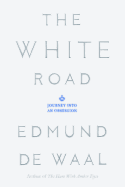
| Publisher: | Farrar, Straus & Giroux | |
| Genre: | Ceramics, Art, Biography & Autobiography, Artists, Architects, Photographers, Literary | |
| ISBN: | 9780374289263 | |
| Pub Date: | November 2015 | |
| Price: | $27 |
| Biography & Memoir |
by Edmund de Waal
English ceramic artist Edmund de Waal has installed his white porcelain works in prestigious museums and galleries across the world, but at heart he still thinks of himself as a potter, who apprenticed for two years before sidestepping his love of ceramics to read for a university degree in English. Under his master Geoffrey Whiting, he learned to make "pots for use... cheap enough to drop... beautiful enough to keep for ever" before he later became obsessively focused on the difficult art of throwing and glazing porcelain. The White Road is a personal and philosophical memoir of de Waal's research into the history of this traditionally treasured symbol of royalty and nobility. He journeys to the porcelain's original source in Jingdezchen, China; its first European factories in Dresden, Germany; and finally its first English manufacturing center in Cornwall. As de Waal's research and visits uncover, the first masters of porcelain were scientists, alchemists and pharmacists, rather than artists, seeking the holy grail of beauty to please their emperors and kings.
De Waal may be a potter and renowned artist, but he is also a reflective student of history, philosophy and literature. His 2013 study of his family history as told through its legacy collection of netsuke carvings, The Hare with Amber Eyes, won both the Ondaatje Prize and the Costa Book Award. The White Road again reveals de Waal to be a renaissance man, with a storytelling gift that illustrates how well-mixed and well-shaped kaolin clay, petunse stone and water could be a deserved passion of both ancient kings and modern kitchen moms. --Bruce Jacobs, founding partner, Watermark Books & Cafe, Wichita, Kan.
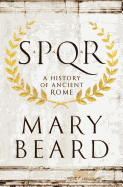
| Publisher: | Liveright | |
| Genre: | Ancient, History, Rome | |
| ISBN: | 9780871404237 | |
| Pub Date: | November 2015 | |
| Price: | $35 |
| History |
by Mary Beard
Writing about ancient peoples relies on such scant evidence that it often resembles a feat of interpretation or well-reasoned guesswork rather than a stately reconstruction of events. Thankfully, Mary Beard (Laughter in Ancient Rome) is a master interpreter, and her history of ancient Rome, S.P.Q.R., brilliantly integrates her various talents in a successful search for a more personal, accessible Rome.
Beard has written piecemeal about the classical world for decades and has a well-earned reputation as Britain's greatest living classicist. S.P.Q.R.--an acronym for Senatus Populusque Romanus, or "The Senate and People of Rome"--is, in part, a summation of all those years of research and of a very particular point of view on our modern relationship with the classics. As Beard writes at the conclusion of the book: "I no longer think, as I once naively did, that we have much to learn directly from the Romans.... But I am more and more convinced that we have an enormous amount to learn... by engaging with the history of the Romans."
With that perspective in mind, Beard uses S.P.Q.R. to correct modern myths about the Romans and to examine carefully ancient myths that the Romans often accepted as historical fact. Beard's skillful exegesis of Rome's strange founding story reveals far more about the Roman character than dry retellings of countless military campaigns, and she characterizes Rome and its various contemporary chroniclers as unreliable narrators who reveal just as much as they obscure with their self-serving exaggerations, propaganda and outright lies. Beard recasts hoary old Romans as dynamic people and ancient history as a continuing conversation with distant, yet familiar, participants. --Hank Stephenson, bookseller, Flyleaf Books
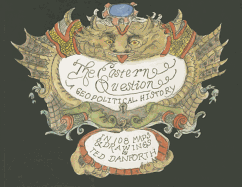
| Publisher: | Anekdota | |
| Genre: | General, History, World | |
| ISBN: | 9780692308400 | |
| Pub Date: | November 2015 | |
| Price: | $29.95 |
| History |
by Ted Danforth
In the weeks after 9/11, self-described "scholar-printer" Ted Danforth struggled to understand why the attacks occurred. He found his first clue in Osama bin Laden's statement that the attacks were revenge for the fall of the Ottoman Empire after World War I and Islam's subsequent humiliation at the hands of the West. That statement led Danforth to look at 9/11 as a "continuation of patterns woven into the warp of historical time," rather than as an individual event. In The Eastern Question: A Geopolitical History in 108 Maps and Drawings, Danforth traces those patterns from ancient Mesopotamia to the modern day.
The format of the book is deceptively simple: a brief essay opposite a map or illustration drawn in a naive style reminiscent of the maps in fantasy novels. In fact, Danforth's work is neither simple nor naive. In his pursuit of answers to "the eastern question," he considers topics as diverse as ancient and modern geopolitical theories, the inherent conflict between nomadic and settled peoples, the differing uses of time and space in churches and mosques, and the nature of empires. There are some errors of fact in the text, but the illustrations are consistently illuminating, whether Danforth is demonstrating the parallel development of Russia and the United States in the 19th century or the historical influence of Greek language and literature.
What begins as a history of 1,400 years of conflict between Islam and the West broadens into a charming and ambitious history of the world. --Pamela Toler, blogging at History in the Margins
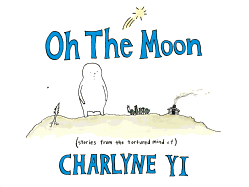
| Publisher: | Harper Perennial | |
| Genre: | General, Humor | |
| ISBN: | 9780062363299 | |
| Pub Date: | November 2015 | |
| Price: | $16.99 |
| Humor |
by Charlyne Yi
In Oh the Moon: Stories from the Tortured Mind of Charlyne Yi, musician, comedian and writer Charlyne Yi has written and illustrated a delightful set of interconnected allegorical tales that is anything but tortured. Yi is best known for her supporting roles in films like Knocked Up and This Is 40, and Oh the Moon proves that the magic she imbues into her comedy routines becomes just as addictive on paper as in person.
In "Forgive Me," the opening story, the world's tiniest boy meets and defends the world's largest boy against an angry mob of villagers who see any differences from the norm as threatening. The drawings in this story are childlike and simple, but the narrative is powerful and symbolic. "Particles" unfolds as a Genesis-like parable in which a "runaway" particle returns to its star of origin after documenting the rise and fall of civilizations. In "Strange Love," the alcoholic Leonard meets the pregnant Marie and spends the night talking about relationships and what it means to love even in the face of heartbreak. Besides "She's All Legs" (a bizarre and strangely triumphant story about a misfit woman with just head and legs who battles the devil alongside an Elvis-impersonator to reclaim a lost soul), "Strange Love" represents the most realized vision of love and loss for Yi. Her increasingly complex drawings become a visual map in which to view the budding arsenal of emotions.
With Oh the Moon, Yi proves herself to be a gifted storyteller, unafraid to explore forbidden areas with tenderness and an open heart. --Nancy Powell, freelance writer and technical consultant
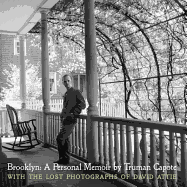
| Publisher: | Little Bookroom | |
| Genre: | Travel, United States, Biography & Autobiography, Photoessays & Documentaries, Northeast - Middle Atlantic (General), Photography, Personal Memoirs | |
| ISBN: | 9781936941117 | |
| Pub Date: | November 2015 | |
| Price: | $29.95 |
| Art & Photography |
by Truman Capote, photographs by David Attie
Truman Capote's essay about Brooklyn Heights, N.Y., filled with clever observations in his familiar style, was first published by Holiday magazine in the 1950s. It was reprinted in 2001, with a foreword by George Plimpton, which is included here. However, the singular contribution of Brooklyn: A Personal Memoir: With the Lost Photographs of David Attie is those photographs, discovered in 2014 by the late photographer's son in dusty wooden boxes. The story Eli Attie tells in his afterword is as compelling as Capote's witty and winning portrait of Brooklyn. Capote's career was distinctly tied to Attie's when the latter was hired to photo-illustrate Breakfast at Tiffany's for its scheduled appearance in Harper's Bazaar, which Eli learned only decades after his father's death.
Capote's essay is of course brilliant in its scenes, characters and language. "Sunstruck scraps of reflected river-shine" and the lovely alliteration of "plenipotentiaries from the pearl-floored palace of Poseidon or mariners merely" exhibit his decorative, evocative way with words. The historic contribution of this glimpse at a place in time is significant; and the same must be said of Attie's documentary photographs, which perfectly complement Capote's text. Since Harper's Bazaar ultimately cut the novella, the included images went unpublished, including several of a young Capote, framed against the "beautiful staircase floating upward in white, swan-simple curves to a skylight of sunny amber-gold glass" in the house where Capote lived (in the basement).
This marriage of Capote's glimmering words with Attie's harmonizing photographs is perfected by the younger Attie's narrative, in this unparalleled addition to the Capote canon. --Julia Jenkins, librarian and blogger at pagesofjulia
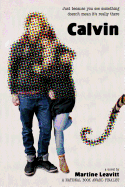
| Publisher: | Margaret Ferguson/FSG | |
| Genre: | Depression & Mental Illness, Adolescence, Social Issues, Juvenile Fiction | |
| ISBN: | 9780374380731 | |
| Pub Date: | November 2015 | |
| Price: | $17.99 |
| Starred | Children's & Young Adult |
by Martine Leavitt
Seventeen-year-old Calvin's first baby gift was a stuffed tiger named Hobbes, his best friend is named Susie, and he was born the very same day Bill Watterson's last Calvin and Hobbes comic was published. It's little wonder, then, that he thinks he is the blond-haired Calvin from Calvin and Hobbes come to life. And that would also explain why Hobbes the tiger is actually talking to him.
Canadian novelist and National Book Award finalist Martine Leavitt (Heck Superhero; My Book of Life by Angel) skillfully reflects the daily agony of a funny, charming, creative, hyper-intelligent young man who just wants to be normal, not a guy who talks to a tiger, not a guy who's diagnosed with schizophrenia. Calvin decides that if he can persuade Bill Watterson to write just one more comic--one with no Hobbes, and where Calvin is 17 and healthy--then he will be cured. And, if he walks from his home in Leamington, Ontario, across the frozen top of Lake Erie to where Watterson lives, in Cleveland, Ohio, the cartoonist won't be able to refuse his request. Calvin's childhood (and only) friend, Susie, decides to join him.
Their treacherous, icy journey blurs into a dreamlike, profoundly romantic, odyssey. They talk about beauty, bullying, overpaid athletes, poverty, war, zebra mussels, injustice... and the possibility of changing the world. But to do that they need to survive. Leavitt's Calvin is a hopeful, exquisite and exciting exploration of the human mind--both well and sick--and the slippery nature of reality. --Karin Snelson, children's and YA editor, Shelf Awareness

| Publisher: | Philomel/Penguin | |
| Genre: | Bedtime & Dreams, Imagination & Play, Juvenile Fiction, Humorous Stories | |
| ISBN: | 9780399176876 | |
| Pub Date: | October 2015 | |
| Price: | $18.99 |
| Children's & Young Adult |
by Eric Carle
The book's title is The Nonsense Show and the cover image is a yellow duck emerging from a banana peel, so the "absurd, odd, preposterous, foolish, weird, surreal" nature of Eric Carle's (The Very Hungry Caterpillar) bold foray into the world of wordplay is made plain from the start. (All those adjectives appear in a boy's cartoon bubble of "gobbledegook" on the final spread.)
"Welcome, friends!/ Don't be slow./ Step right up to/ The Nonsense Show!" A rabbit magician pulls a boy out of a hat, a trick that kicks off the topsy-turvy journey ahead, where a fish is stuck in a birdcage and a mouse leads a cat around on a leash. Sometimes the "twist" is not a standard switcheroo like the previous examples, it's just random silliness: "What a funny-looking ball/ Thought the tennis ace/ And wound up/ With applesauce/ In her face." Carle gleefully dares to rhyme "ought-er" with "water" in one poem about a rubber duck with human feet, and in one particularly pleasing spread, Mr. Up is seated up on the ceiling eating cake and Mrs. Down is seated down on the floor eating cake: "It's not a mistake,/ It's just how they eat cake."
Carle's cut-paper artwork, with its chunky shapes and vibrant colors, is the right match for the simple, absurdist scenarios. Early sketches of the final artwork populate the endpapers--from the man in a doghouse to the upside-down cake eater--one more clever design touch to reflect the freewheeling spirit of this playful ode to nonsense. --Karin Snelson, children's and YA editor, Shelf Awareness